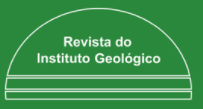The 3H/3He Groundwater Age-Dating Method And Applications
DOI:
https://doi.org/10.14295/derb.v42.740Keywords:
Groundwater age; Isotope hydrology; Environmental tracers; Groundwater recharge; Contaminant transport; Aquifer characterizationAbstract
Groundwater age-dating is an important tool for quantifying and managing water resources. Groundwater age is the elapsed time between recharge (at the land surface or water table) and the time when groundwater is sampled. If groundwater is sampled at the point of discharge from an aquifer, then the age represents the groundwater transit time. Groundwater that has recharged in recent decades is considered young groundwater. In many areas, the quality and quantity of young groundwater has been impacted by human activities and groundwater age-dating is useful for quantifying current and historical water and contaminant fluxes into and through aquifers. This review is focused on the tritium-helium (3H/3He) method, which is a robust and widely applied age-dating technique for young groundwater. We present the development of the 3H/3He method and practical considerations for sampling groundwater in shallow unconfined aquifers. Along the way, we highlight available resources: (1) educational software for building intuition around groundwater age-dating and selection of sampling sites and (2) software that can be used to calculate 3H/3He age from noble gas and 3H data. We also highlight strengths and potential uncertainties associated with the method. For example, while other age-dating techniques require a known historical record of tracer concentration in the atmosphere, the 3H/3He age-dating technique does not require such historical records. However, the 3H/3He method requires measurement of two tracers to produce a groundwater age estimate (“apparent age” or “tracer age”). Precise measurement of 3H and noble gases, plus careful analysis of noble gas data to calculate the tritiogenic 3He (i.e., the portion of 3He derived from decay of 3H in the aquifer) is required to calculate the groundwater apparent age. Sampling for noble gases is sometimes challenging and requires specialized sample containers and technique. We also introduce basic sampling methods in this review but highlight how practitioners should work closely with a noble gas laboratory to obtain the correct containers and assess field conditions and/or the overall feasibility of projects. Lastly, the review highlights recent applications of the 3H/3He method, including recharge rate estimation, characterization of contaminant input histories for aquifers, quantifying groundwater transit times by sampling at aquifer discharge points, and the use of isotope data to constrain and inform numerical and statistical models of groundwater and contaminant movement in the subsurface.
Downloads
Downloads
Published
How to Cite
Issue
Section
License
Copyright (c) 2021 Derbyana

This work is licensed under a Creative Commons Attribution 4.0 International License.
Política de Acesso Livre:
A revista Derbyana oferece acesso livre ao seu conteúdo. Toda a coleção da Revista é disponibilizada de forma gratuita em https://revistaig.emnuvens.com.br/derbyana e no Portal de Periódicos Eletrônicos em Geociências – PPeGeo (http://ppegeo.igc.usp.br), resultado de parceria entre a Sociedade Brasileira de Geologia e o Serviço de Biblioteca e Documentação do Instituto de Geociências da Universidade de São Paulo.




















